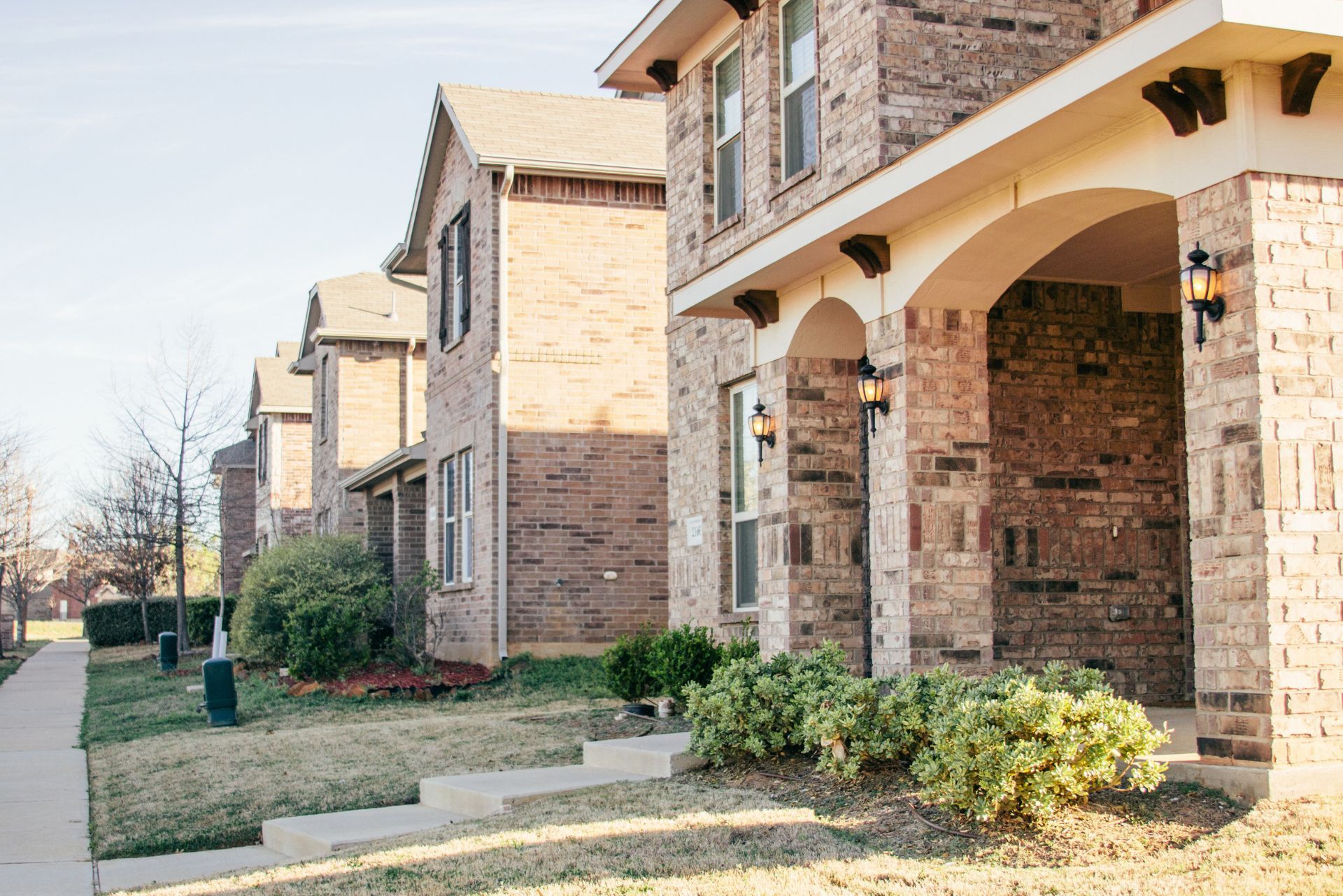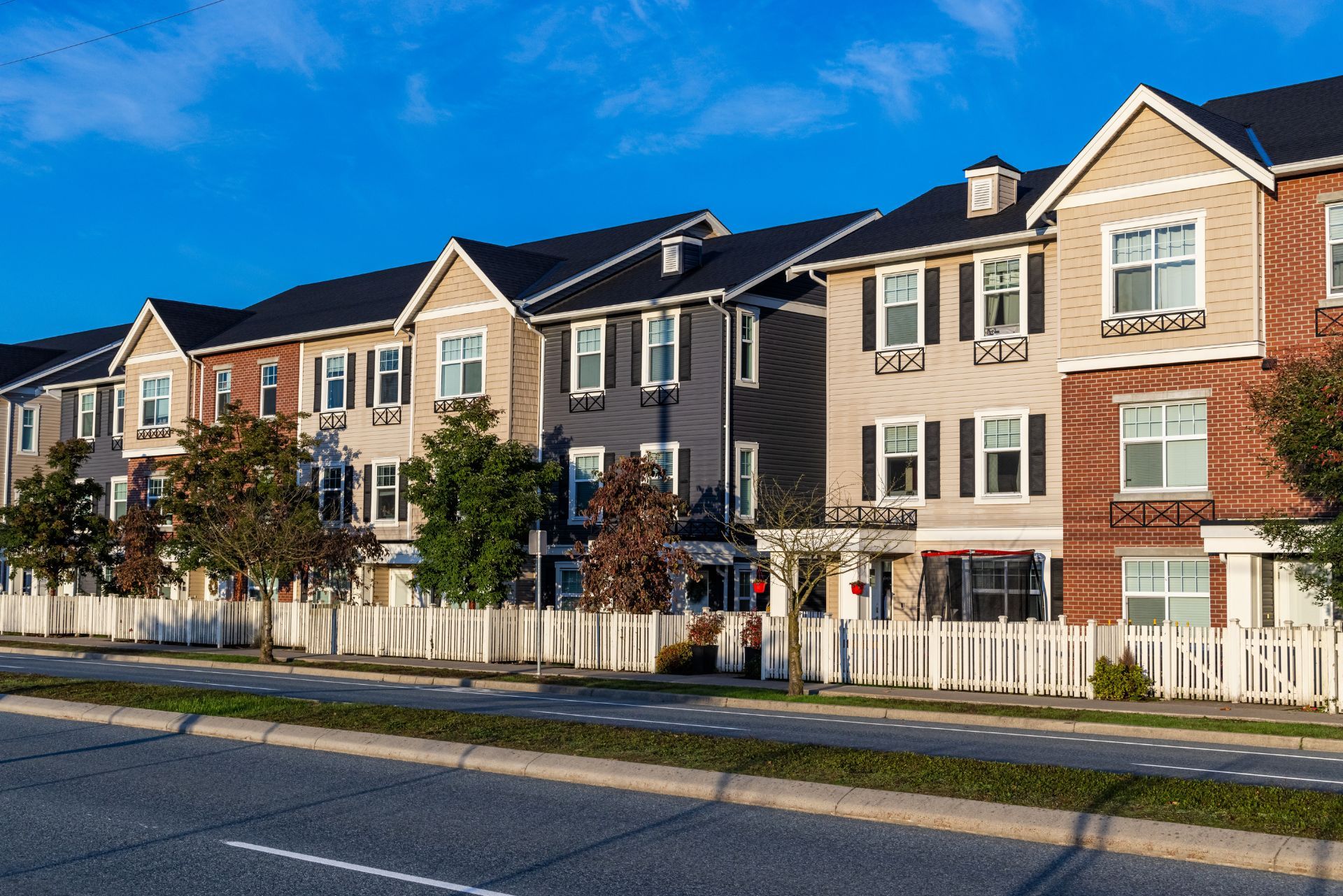Minnesota Fourplex Insurance Coverage

See How We're Different
or call us: (763) 242-1668
Common Business Insurance Policies
By: Matt Larsen
Owner of Capstone Insurance Group & Restaurant Insurance Advisor
763-242-1668
Index
Understanding the Rising Insurance Costs for Fourplexes in Minnesota
How Property Age and Condition Affect Fourplex Insurance
Key Coverage Options and What They Mean for Fourplex Owners
Strategies to Manage and Reduce Fourplex Insurance Costs
The Impact of Insurance Costs on Fourplex Investment and Development
Conclusion: Staying Ahead in Minnesota’s Fourplex Insurance Landscape
Contact Us
Owning a fourplex in Minnesota comes with unique insurance challenges and considerations. With the rising costs of property insurance across the state, multifamily housing owners must stay informed to protect their investments effectively. This comprehensive guide dives into the current landscape of fourplex insurance coverage in Minnesota, highlighting key trends, cost drivers, and practical tips for securing the right policy.
The multifamily housing insurance market in Minnesota has experienced significant shifts recently. According to a
Federal Reserve Bank of Minneapolis study, property insurance premiums for multifamily properties, including fourplexes, have increased by an average of 45% from 2021 to 2024. This surge is impacting not only existing property owners but also the development of new affordable housing in the region.
Understanding the Rising Insurance Costs for Fourplexes in Minnesota
Over the past few years, Minnesota has seen a sharp increase in property insurance premiums, particularly affecting multifamily buildings such as fourplexes. From 2023 to 2024 alone, a survey of 35 multifamily housing owners across Minnesota and neighboring states reported a 45% rise in insurance premiums. This trend is part of a broader pattern where Minnesota ranks 12th nationally in premium increases, with rates rising 39% over the past seven years, far outpacing inflation.
Several factors contribute to these rising costs. One major driver is the increased frequency and severity of storms in Minnesota. For instance, a single storm in 2023 caused approximately $1 billion in claimed losses across the Twin Cities and central Minnesota, putting significant strain on insurance providers and pushing premiums higher.
Additionally, insurance companies have become more cautious about insuring certain types of apartment buildings, especially older properties. This caution leads to higher premiums and deductibles, making insurance coverage more expensive and sometimes harder to obtain for older fourplexes.
For property owners, understanding these dynamics is crucial. As the Federal Reserve Bank of Minneapolis notes, insurance companies are increasingly favoring newer multifamily properties, which tend to have updated systems and better risk profiles, over older buildings.
Moreover, the rising costs are not solely attributed to natural disasters. The ongoing inflationary pressures affecting various sectors, including construction and labor, have also played a significant role in escalating insurance rates. As the cost of materials rises, so does the replacement value of properties, which in turn influences the premiums that insurers charge. This means that even if a property has not suffered any damage, its insured value can increase simply due to market conditions, thereby raising the overall insurance costs for owners.
Another important aspect to consider is the regulatory environment surrounding insurance in Minnesota. Changes in state laws and regulations can impact how insurance companies assess risk and set premiums. For instance, initiatives aimed at enhancing building codes or improving community resilience against climate change can lead to increased scrutiny from insurers, who may adjust their pricing models accordingly. Property owners are encouraged to stay informed about these legislative changes, as they can directly affect their insurance rates and overall financial planning.

How Property Age and Condition Affect Fourplex Insurance
One of the most important factors influencing insurance premiums for fourplexes in Minnesota is the age and condition of the property. A report from the Minnesota Housing Partnership highlights that in three regions of Greater Minnesota, 40% of rental properties were built prior to 1970. These older buildings often require more costly insurance due to outdated construction materials, electrical systems, and plumbing, which increase the risk of damage and claims.
However, not all older properties are treated the same by insurers. An expert from the Federal Reserve Bank of Minneapolis explained that sometimes agents may not fully consider recent improvements when assessing risk. For example, a fourplex with a new roof or updated wiring might still be penalized for its age, leading to unnecessarily high premiums.
For owners of older fourplexes, this means it’s essential to document any upgrades or renovations thoroughly and communicate these improvements clearly to insurance agents. Doing so can help negotiate better rates and ensure the property is evaluated more accurately.
Investing in property maintenance and modernization can also improve insurability and reduce costs in the long term. Newer properties or those with recent upgrades tend to attract more favorable insurance terms, as they present less risk to insurers.
Moreover, the location of the fourplex also plays a significant role in determining insurance premiums. Properties situated in areas prone to natural disasters, such as floods or tornadoes, may face higher rates regardless of their age or condition. For instance, a fourplex in a flood zone may require additional flood insurance, which can substantially increase overall costs. Understanding the local climate and environmental risks can help property owners prepare for potential insurance implications.
Additionally, the occupancy rate and tenant behavior can influence insurance assessments. Insurers often consider the likelihood of claims based on how well the property is managed and the reliability of its tenants. A well-maintained fourplex with responsible tenants may qualify for lower premiums, while properties with frequent tenant turnover or poor management practices could be seen as higher risk. Therefore, fostering a positive tenant-landlord relationship and maintaining open lines of communication can not only enhance the living experience for tenants but also contribute to more favorable insurance outcomes.
When insuring a fourplex in Minnesota, understanding the different types of coverage available is vital. Typical policies include:
- Property Damage Coverage: Protects the building and any attached structures from perils like fire, wind, hail, and vandalism.
- Liability Coverage: Covers legal and medical costs if someone is injured on the property.
- Loss of Rental Income: Provides compensation if the property becomes uninhabitable due to a covered loss, helping to offset lost rent.
- Deductibles and Limits: These determine how much the owner pays out-of-pocket before insurance kicks in and the maximum payout the insurer will provide.
Given the rising costs, many fourplex owners are seeing higher deductibles as insurers try to manage their risk exposure. It’s important to balance deductible levels with premium costs to find the most cost-effective solution.
Additionally, some insurers may exclude certain perils or require additional endorsements for risks like flooding or sewer backup, which are relevant in Minnesota’s climate. Reviewing policy details carefully and consulting with an experienced insurance agent can help ensure comprehensive protection.
Moreover, fourplex owners should also consider optional coverages that can enhance their policies. For instance, adding an endorsement for equipment breakdown can be particularly beneficial, as it covers costly repairs or replacements for essential systems such as heating or air conditioning units that may fail unexpectedly. This is especially pertinent in Minnesota, where extreme temperatures can put additional strain on such systems.
Another important aspect to consider is the impact of local regulations and zoning laws on insurance requirements. In some areas, there may be specific mandates that dictate minimum coverage levels or additional types of insurance that must be carried, such as flood insurance in flood-prone regions. Staying informed about these regulations not only helps in maintaining compliance but also ensures that fourplex owners are adequately protected against potential liabilities that could arise from local environmental conditions.
Strategies to Manage and Reduce Fourplex Insurance Costs
Despite the upward trend in premiums, there are practical steps fourplex owners can take to manage and potentially reduce their insurance expenses:
- Invest in Property Upgrades: Installing modern roofing, updated electrical systems, and fire prevention measures can lower risk profiles and premiums.
- Shop Around: Comparing quotes from multiple insurers can uncover more competitive rates and coverage options.
- Bundle Policies: Some insurers offer discounts when bundling property insurance with other policies like liability or umbrella coverage.
- Maintain Good Claims History: Avoiding frequent claims helps keep premiums stable over time.
- Work with Knowledgeable Agents: Experienced agents can provide nuanced risk assessments and negotiate better terms, especially for older properties with improvements.
As one expert from the Federal Reserve Bank of Minneapolis pointed out, sometimes insurance agents may not fully appreciate the nuances of a property’s condition, which can affect pricing. Advocating for a detailed and accurate property evaluation can make a significant difference.
In addition to these strategies, it’s also beneficial for fourplex owners to engage in regular maintenance and inspections. By proactively addressing potential issues such as plumbing leaks, pest infestations, or structural concerns, owners can not only enhance the safety and livability of their properties but also demonstrate to insurers that they are committed to risk management. This proactive approach can lead to lower premiums, as insurers often reward policyholders who take steps to mitigate risks before they escalate into claims.
Furthermore, participating in community safety programs can also have a positive impact on insurance costs. Many insurers offer discounts for properties located in neighborhoods that have active crime prevention initiatives or community watch programs. By collaborating with local law enforcement and community organizations, fourplex owners can help foster a safer environment, which can lead to reduced risk and, consequently, lower insurance premiums. This not only benefits the property owner financially but also contributes to the overall well-being of the community.
The Impact of Insurance Costs on Fourplex Investment and Development
The rising cost of property insurance is not only affecting current fourplex owners but also shaping the broader housing market in Minnesota. The Federal Reserve Bank of Minneapolis has observed that increasing insurance premiums are influencing decisions about new affordable housing developments.
Higher insurance costs can reduce the financial feasibility of building or maintaining multifamily properties, particularly in areas with older housing stock or higher risk profiles. This trend poses challenges for addressing Minnesota’s housing needs, especially in Greater Minnesota where many rental properties are aging. As a result, developers may be compelled to reassess their project locations, opting for regions with lower insurance costs, which could inadvertently lead to a concentration of new developments in specific areas while neglecting others that are in dire need of housing.
For investors and developers, understanding insurance market dynamics is crucial for budgeting and risk management. Newer multifamily properties with modern construction are becoming more attractive to insurers, which may shift development patterns over time. This shift could also encourage a focus on sustainable building practices and the use of innovative materials that not only meet modern safety standards but also help mitigate risk factors associated with natural disasters and other liabilities. As insurance companies increasingly weigh environmental factors in their assessments, developers might find themselves investing more in green technologies to secure favorable insurance rates.
To learn more about how insurance trends are affecting multifamily operations, the
Federal Reserve Bank of Minneapolis provides in-depth analysis and insights. Additionally, local housing authorities and community organizations are beginning to collaborate with developers to explore innovative financing solutions that could help offset rising insurance costs, thereby promoting the construction of affordable housing options that are essential for community stability and growth.

Conclusion: Staying Ahead in Minnesota’s Fourplex Insurance Landscape
Insurance coverage for fourplexes in Minnesota is evolving amid rising premiums, changing insurer risk appetites, and increased weather-related losses. For property owners, staying informed and proactive is key to securing effective and affordable insurance.
By understanding the factors driving cost increases, investing in property improvements, carefully reviewing coverage options, and working with knowledgeable insurance professionals, fourplex owners can better protect their investments. While the insurance market presents challenges, strategic management can help mitigate risks and control costs.
As the multifamily housing insurance environment continues to shift, ongoing vigilance and adaptation will remain essential for Minnesota fourplex owners aiming to safeguard their properties and financial stability.
For further details on insurance trends and multifamily housing in Minnesota, the
ProgramBusiness report offers valuable context on how
storm damage and industry changes are driving up costs statewide.





